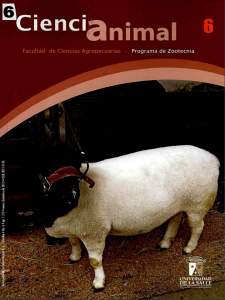Abstract
Residues of crops subject to ammonification have potential in the feeding of ruminants. This study used a crop of Zea mays for the production of grain, and the nutritional quality of the plants at different phenological stages (milky grain, pasty grain and after the corn harvest) and the residues of crops subject to ammonification were evaluated. Samples were taken from each stage and from the ammoniated residue so as to determine nutritional quality (MS, PC, FDN, FDA and DIVMS); an analysis was also made of the cost of production of the ammoniated material. Differences were found in the forage nutritional value of Z. mays, quality loss was observed with each phonological stage of the crop and the recovery to an acceptable degree of crop residue through the ammonification process. It was found that PC in the residue subject to ammonification increased from 3.4 % to 6.85 %; that FDN decreased from 86 % to 80.2 %, as did FDA from 62.3 % to 54.1 %; that DIVMS increased from 29 % to 43.3 % with respect to crop residue. On the other hand, the cost of production of a kilogram of ammoniated material was $174. The ammonification of residues of the Zea mays crop is an alternative for feeding ruminants that may be considered by producers, especially at critical times.Downloads
Download data is not yet available.



